Aesthetics – The beauty of clay brick
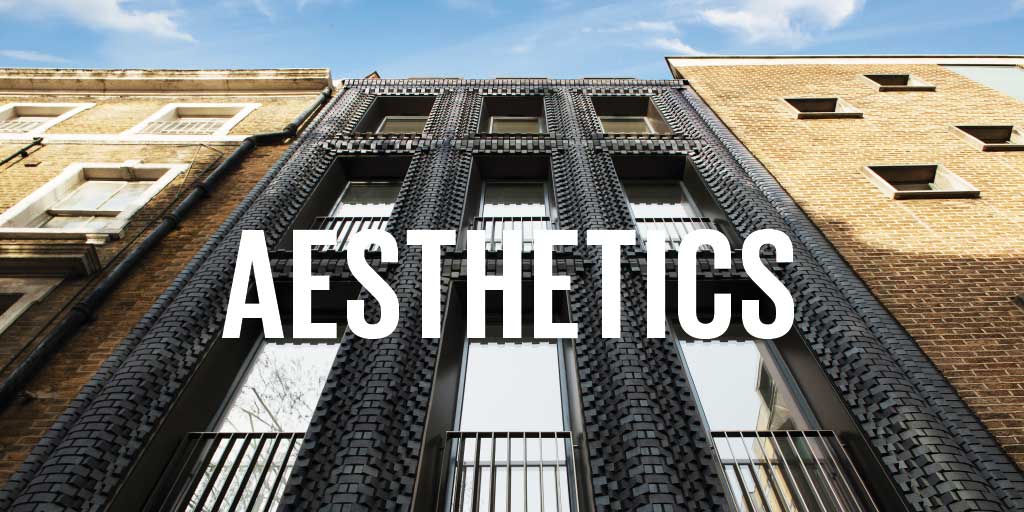
Contemporary, traditional, occasionally transformational, but always beautiful, clay brick is doubtless one of the most versatile building materials that has formed, and continues to form, much of Britain’s built landscape.
Perhaps it’s because it’s derived from the very earth we stand on that clay brick is so pleasing to the eye, and grounds our buildings in their landscape. From our homes to where we work, shop, play, and rest, most of us probably spend the greater part of our time either in or walking past clay brick buildings, without a second thought. But that’s arguably the beauty of it.
Clay brick for our homes
From the historic to the modern, and from street after street of Victorian terraces to post war housing estates and new-build housing developments, clay brick provides a beauty and a permanence to residential buildings that is rarely achieved with other building materials.
The wealth of colour, texture, size and shape is vast, and has contributed to the creation of distinct regional variations. In Cambridgeshire, for example, the area’s gault clays produce bricks in a light, creamy-buff shade; in the north of England, bricks are typically dark red and smooth – a result of the carboniferous shale clays found in the area; while in the south-east, clays can give rise to a rich red, containing iron oxide, through to a yellow/buff colour. Focus in a little more and there are even more localised variations, such as in the Weald of Sussex, where concretions of iron in the brick appear as black patches once the brick has been fired.
While, historically, these regional variations were the result of brick factories arising wherever there was a healthy seam of clay for brick making, modern brick factories continue to replicate many of them today, ensuring new build houses sit comfortably within the local vernacular.
But the real beauty of clay brick lies in its versatility; while it might be a safe bet for a traditional style house, it can make a striking statement when used in contemporary architecture. As well as standard bricks, clay can be worked and moulded to create unique brickwork features and detailing for restoring historic homes or to add a finishing touch to a one-off grand design.
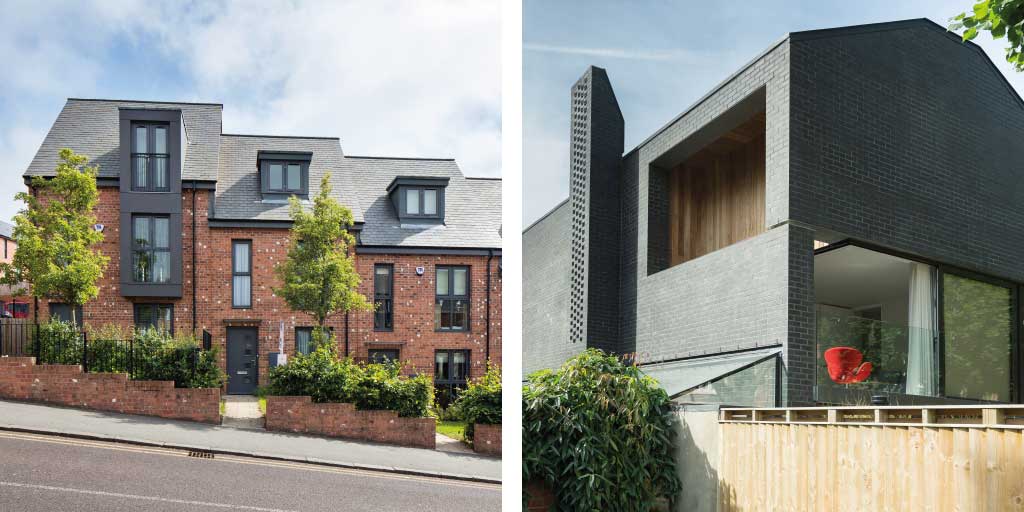
Clay brick for award-winning commercial architecture
It is perhaps in the commercial arena where clay brick’s versatility as a building material, and appeal to modern architecture, is more apparent.
Lea Fields Crematorium is an award-winning contemporary design by architectural practice Haverstock. Completed in 2019, the crematorium is located on a hillside in parkland near the village of Lea in Lincolnshire. The architect explains their material choice for the building: “The earthy material palette of brick, timber and bronze help create a series of calming and contemplative spaces inside this crematorium… the use of natural materials both internally and externally… place the building within its landscape, and the carefully considered large bronze framed window panels to articulate the brick building and offer views across the wider site and beyond.”
The brick used was Ecostock Carsington Cream, a light buff brick, produced at Forterra’s factory in Measham, Leicestershire, just 85 miles from the site of Lea Fields Crematorium.
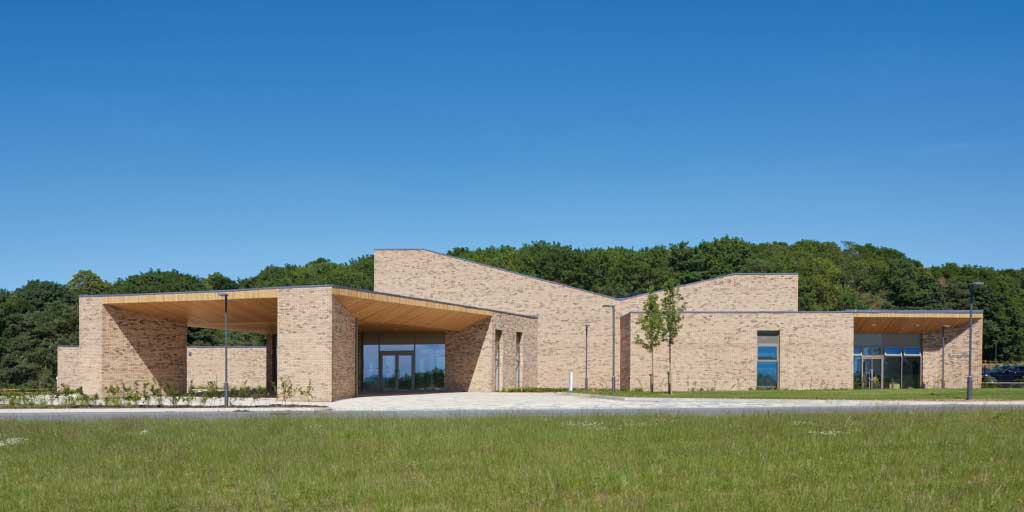
York House in London’s Islington was once an anonymous, almost forbidding, seven-storey office block constructed in the 1980s. It is a striking example of the transformational effect of architecture that takes advantage of the versatility of clay brick.
The transformation saw a five-storey extension added to the front of the original building, with a complex, structurally self-supporting brickwork lattice that allowed light to flood into the building. The extension was constructed using Blue Brindle Smooth, an engineering brick similar to that used in the original building. The bespoke brick, produced in three different lengths, was developed by Forterra over a period of months in close collaboration with the architect De Metz Forbes Knight and their structural engineers Webb Yates.
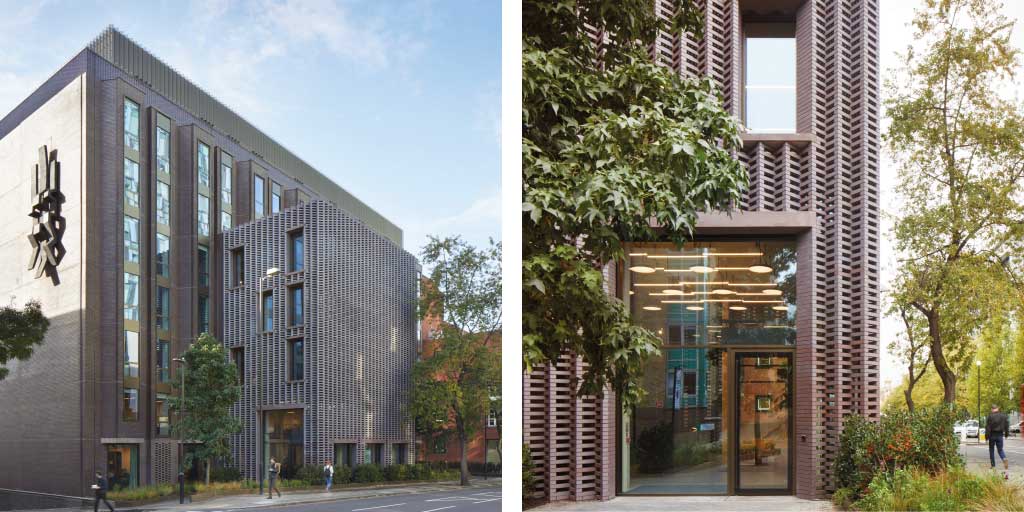
Clay brick for the modern construction industry
While clay brick has its roots in tradition and heritage, new innovations mean it is also very much a building material for the modern construction industry. In particular, clay brick slips – which, like all clay brick, are inherently fire-safe – are making it possible to achieve a clay brick finish on modular and high rise buildings. Light in weight, they can be used to clad buildings where a traditional clay brick would be too heavy, enabling developers and architects to comply with Building Regulations and achieve aesthetic goals in even the most challenging of construction environments.
Forterra’s SureBrick is a mechanically retained, non-combustible brick slip system that offers an enhanced choice of architectural features, design and finish options.
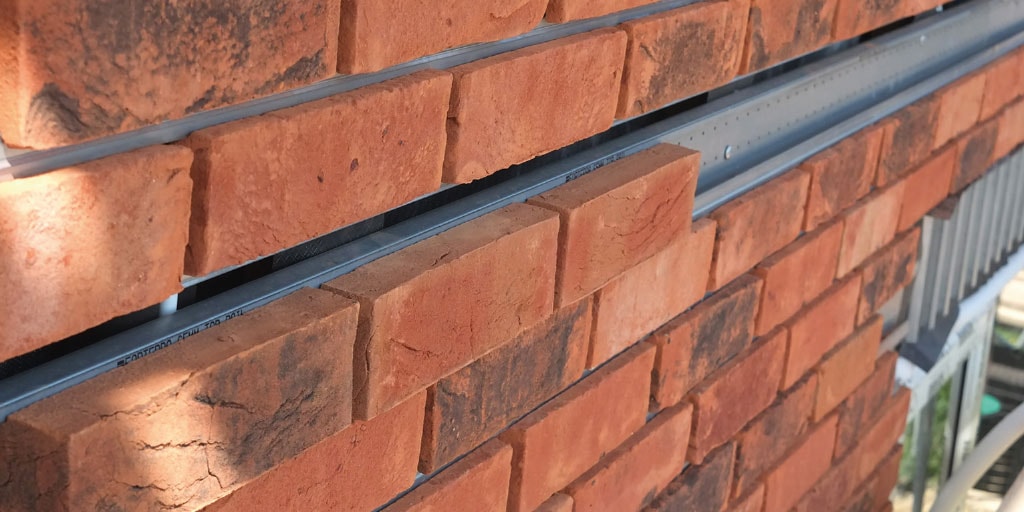
Further reading:
Lea Fields Crematorium
York House
You can read more about the aesthetics of clay brick in our e-book.
